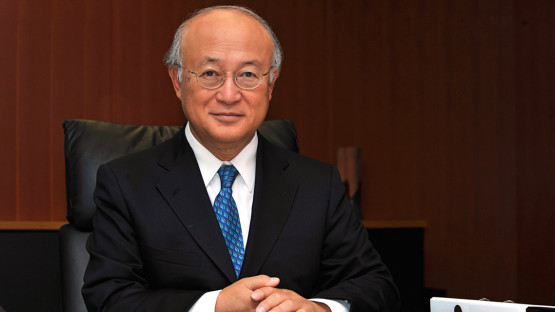Cambridge, the United States – The IAEA carries out stronger inspection activities in Iran and knows more about its nuclear programme as a result of the international agreement known as the Joint Comprehensive Plan of Action (JCPOA), Director General Yukiya Amano said in a speech at Harvard University today.
In an address on the IAEA’s role in Iran and why the JCPOA is a clear gain for verification, he said his organisation had more inspection powers over a nuclear programme which has become smaller following the 2015 agreement between Iran and six other countries, plus the European Union. Under the JCPOA, Iran reduced its nuclear activities and agreed to greater access for inspectors.
“Without the JCPOA, we would have much less knowledge of Iran’s nuclear programme,” Mr Amano told the audience at Harvard Kennedy School’s Belfer Center for Science and International Affairs in the eastern U.S. city of Cambridge.
The nuclear-related commitments undertaken by Iran under the JCPOA are being implemented and the IAEA has so far had access to all locations it has needed to visit in the country, he said, adding: “The sun does not set on IAEA safeguards.”
Mr Amano spoke at Belfer Center on the last stop of a 9-day visit to the United States, during which he also gave speeches and held meetings in Washington DC and New York, including his annual statement to the United Nations General Assembly on the IAEA’s work in support of global peace and development.
In Washington DC, he spoke at the Woodrow Wilson International Center for Scholars at an event to mark the IAEA’s first six decades since it was established in 1957, and also met with senior U.S. administration officials and members of the U.S. Senate for discussions focused on Iran and North Korea.
In New York, he met with the U.S. Permanent Representative to the United Nations, Ambassador Nikki Haley, and the President of the United Nations General Assembly, Miroslav Lajčák. He also spoke at the renowned Perlmutter Cancer Center on how nuclear technologies can help in confronting the global cancer crisis, which is especially affecting developing countries.
At Harvard University, he noted that the IAEA had been at the heart of efforts to resolve the Iran nuclear issue since 2002, when reports first emerged of possible undeclared nuclear activities in the country. In 2005, the IAEA Board of Governors found Iran in non-compliance of its safeguards obligations. The following year, the Board – with Mr Amano as Chairman – reported Iran’s non-compliance to the United Nations Security Council.
Director General Amano said he decided after taking office in late 2009 to clearly spell out the IAEA’s assessment of the situation and the facts that it had established through many years of verification efforts in Iran, as well as the concerns it had.
After years of little headway, he said there was movement in the right direction in 2013 after the election of President Hassan Rouhani in Iran, eventually leading to the IAEA and Iran signing a Road-map in July 2015 to clarify the possible military dimensions to Iran’s nuclear programme and a separate agreement between Iran and the six countries known as P5+1, and the European Union, on the JCPOA.
The IAEA was requested by the United Nations Security Council and authorised by the Board of Governors to verify and monitor Iran’s implementations of its nuclear-related JCPOA commitments, which it has done since the agreement’s Implementation Day in January 2016.
Crucially, Iran is now provisionally implementing the Additional Protocol (AP) to its Comprehensive Safeguards Agreement (CSA) with the IAEA, giving inspectors wider access to information and locations in Iran, Mr Amano said.
IAEA inspectors now spend around 3,000 days in the field in Iran each year, twice as many as in 2013. As part of their extensive verification activities, they have taken hundreds of environmental samples and placed some 2,000 tamper-proof seals on nuclear material and equipment. In addition, the IAEA collects and analyses hundreds of thousands of images captured daily by its sophisticated surveillance cameras in Iran, and also collects and analyses several million pieces of open source information each month.
“All of our activities are supported by state-of-the-art technology, including data collecting and processing systems. Our current verification capability is much stronger than it has ever been,” Mr Amano said.
Today, he said, the combination of the CSA, the AP and additional transparency measures under the JCPOA represents “the most robust verification system in existence anywhere in the world.”



